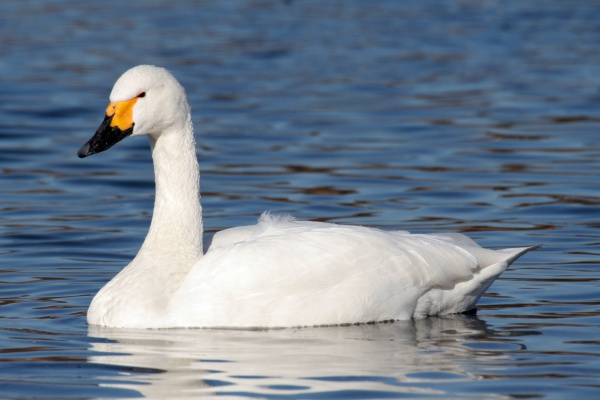Facts About Tundra swan
The tundra swan is an intriguing bird species found throughout the Holarctic region, consisting of two main subspecies: Bewick's swan and the whistling swan. Bewick's swan is named after the engraver Thomas Bewick, while the scientific name "columbianus" for the whistling swan is derived from the Columbia River.
These swans are recognized for their striking white plumage, black feet, and primarily black bills with a touch of salmon-pink. They possess distinctive calls and are migratory, breeding in the Arctic and subarctic tundra and wintering in coastal grasslands and marshlands.
Bewick's swans are slightly smaller than whistling swans and feature unique bill patterns. In contrast, whistling swans are larger and have predominantly black bills with a small yellow spot at the base. Tundra swans exhibit diverse diets, feeding on aquatic plants during the summer and grains in the winter. While they have few natural predators, Arctic foxes and brown bears can present a threat. These swans are monogamous, mating for life, and build large nests near water, vigorously defending their territories.
The conservation status of tundra swans varies depending on the subspecies. Whistling swans are the most prevalent in North America, but they face threats such as habitat destruction, water pollution, and hunting, with lead poisoning being a significant concern. Bewick's swan populations are notably declining in northwestern Europe. Although the tundra swan is not considered threatened overall, conservation efforts are ongoing to protect these splendid migratory birds, particularly from dangers like toxic mining wastes in certain regions.

 Belgium
Belgium